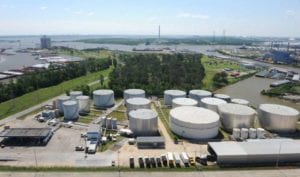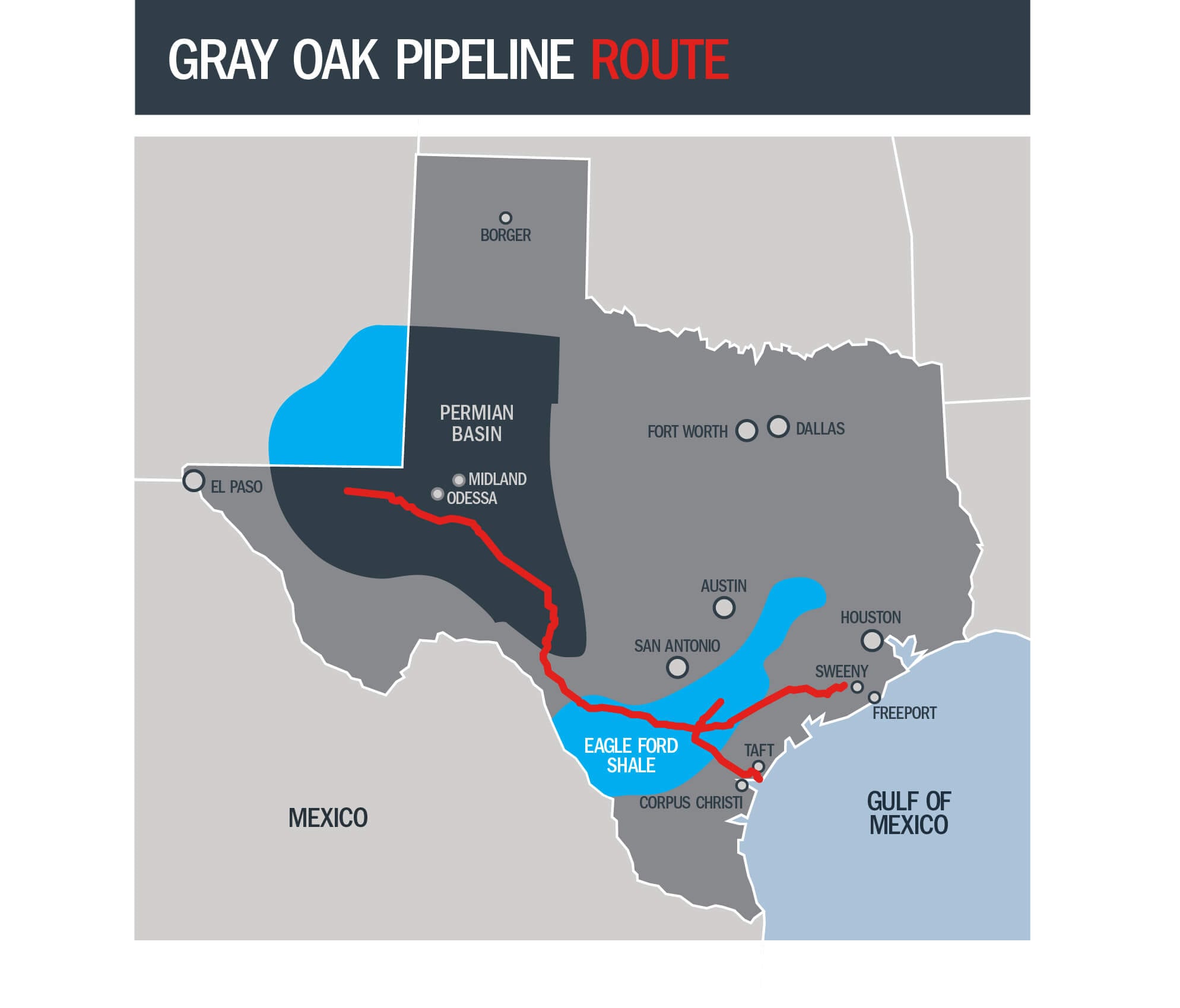Oil production in the Permian Basin has surged from less than 1 million barrels per day in 2009 to over 3.5 million barrels per day by the fall of 2018. Production in the Permian basin, the biggest oil-producing region in the United States, has created a bottleneck of sorts for operators trying to bring the crude oil from the basin to the Gulf of Mexico.
The Gray Oak Pipeline will help. It’s a joint venture between pipeline companies Phillips 66 Partners and Andeavor and is expected to be operational by the end of the year. It will stretch 850 miles from the Permian Basin region, starting near Reeves County, Texas, and continuing through the region to destinations in Corpus Christi, Sweeny, and Freeport, Texas, per a news release. The pipeline will carry a capacity of about 900,000 barrels per day.
The line will provide benefits to local communities along the way, stimulating local construction, restaurant, and hospitality industries, according to the two companies.
Another pipeline servicing natural gas liquids (NGLs) in the region will start by 2020. The Grand Prix Pipeline, a subsidiary of Targa Resources, will have a capacity of about 300,000 barrels of NGLs per day, with the option to expand to about 550,000 barrels per day. Targa also announced that the Grand Prix Pipeline will extend into southern Oklahoma, using “long-term” commitments for both transportation and fractionation services in Arkoma, Oklahoma, near the state’s border with Arkansas.

More pipelines mean more oil and gas can be transported out of the Permian Basin, where the U.S. Geological Survey announced in November 2018 the discovery of one of the largest shale deposits in U.S. history. The region could nearly double its crude oil production by 2023, accounting for 60 percent of the world’s production growth during that time.


